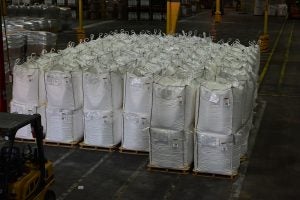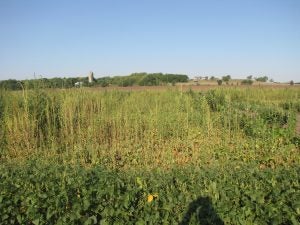Activist groups and other organizations that go after conventional agriculture will lead you to believe that farmers are spraying the world to death. This notion is centered around pesticides, the overarching term for herbicides, insecticides, nematicides, fungicides, and other chemicals that are used to protect agricultural crops (and other plants) against pests and disease. The United States, the world’s second-largest agricultural producer, applies about 1 billion pounds of pesticides throughout the country every year.
One billion pounds sounds like a lot, but in reality, it isn’t.
Even if all of those 1 billion pounds of pesticides were applied to only agriculture lands (which they aren’t), it still works out to be less than 1.2 pounds of pesticides for each acre of farmland. For every 1,000-square-foot block of farmland you walked through, there would be only 0.03 pounds of pesticide — if these were grains of rice in the field you likely wouldn’t even be able to spot a single one. There is a myth pushed by some groups about the over-application of pesticides on U.S. farmlands, but this is largely a misconception considering modern agriculture’s use of GPS technology, advanced spraying and monitoring systems, and the targeted nature of modern crop protection products.
Most pesticides have strict regulations in place, too, including the breadth of their safety testing before being allowed to be used and certifying who is allowed to apply them.

However, we aren’t naïve — we know that sometimes you can find examples of over-application of chemicals on farms, particularly if some operations stick to older methods or less efficient ways of applying pesticides, but the overall majority is up-to-speed on current science and technology. Additionally, because pesticides are expensive, farmers typically can’t afford to overapply! Even the “cheap” ones will cost you nearly $10 an acre to purchase, not to mention the fuel and labor needed to apply them. Farming is a business, and additional expenses, even ones as seemingly small as $10/acre, could make or break the budget that year (the average size of a U.S. farm is 445 acres). Over-application of pesticides is simply not an option for many farmers; it doesn’t help the crops, and it hurts farmers’ pockets.
Also, applying the wrong amount of pesticides, whether too much or too little, can contribute to a serious problem for farmers: pesticide resistance.
Pesticide resistance is when a pest or disease becomes “immune” to the effects of the chemical and is no longer controlled by current products on the market. Pesticide resistance means that very serious pests can no longer be controlled in a crop field. When farmers have limited chemical options to control a pest or disease they must revert to other methods, like switching crops entirely, ditching no-till farming, or using broader-spectrum or harsher products. Under-application of pesticides is more likely to lead to resistance, since there will be a remaining level of the pest in the field that is “immune” to the chemical — this pest will reproduce and pass along its immunity to offspring. This is an over-simplified explanation of how pesticide resistance occurs, but it’s hopefully a relatable one.

While we’ve now established reasons that farmers aren’t “spraying the world to death,” why do they have to spray at all? The short answer for consumers is food prices. And farmers have many problems to deal with, from disease to insects, weeds and more. Using pesticides on both convention and organic farms help effectively manage pests and disease at a lower cost than other methods. Without pesticides, we would have lower yields (meaning less food), higher production costs, and more waste of products that aren’t marketable due to damage. All of this means that the food that does end up at the grocery store will cost consumers more.
Pests and disease have short lifecycles, meaning they can adapt to their surroundings quickly and are “improving” constantly. One pest for many crops is stink bugs — they can hatch and begin reproducing in 60 days, with each female laying up to 400 eggs in her short lifespan. Biotechnologies, such as GMO and genetically engineered seeds, help crops improve, but these take time to be developed (often years and years). Seed and crop technologies can do wonders to reduce the need for pesticides by increasing the crops resistance to pest and disease damage.
Farmers are doing everything they can to bring safe, wholesome food to your dinner table.
Michelle Miller, the “Farm Babe,” is an internationally recognized keynote speaker, writer, and social media influencer and travels full time to advocate for agriculture. She comes from an Iowa-based row crop and livestock farming background and now resides on a timber farm in North Central Florida.



